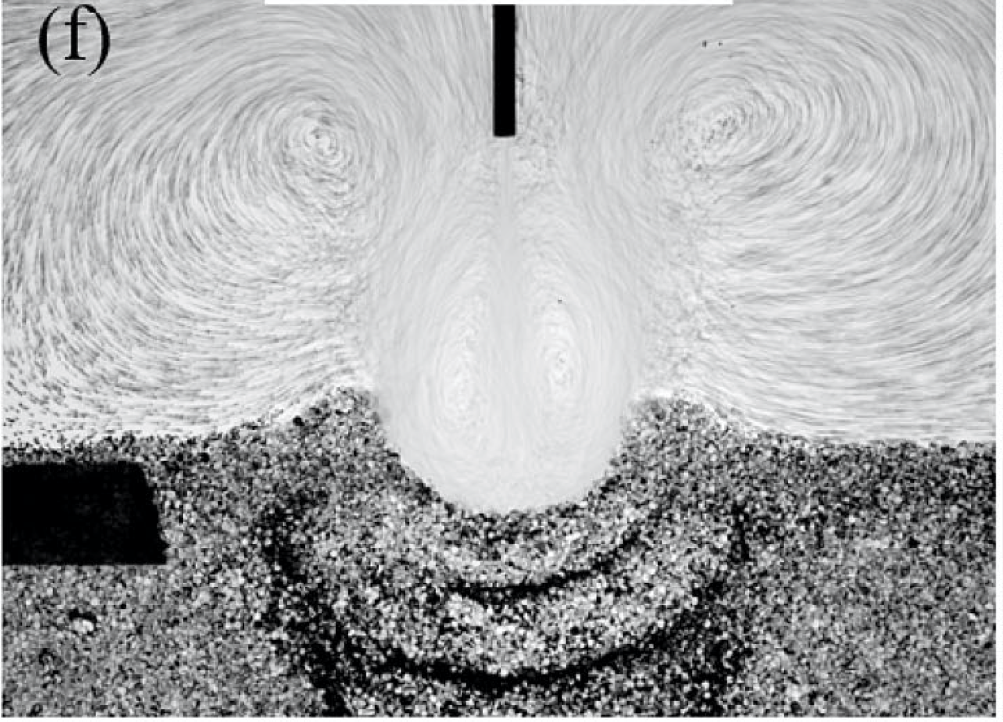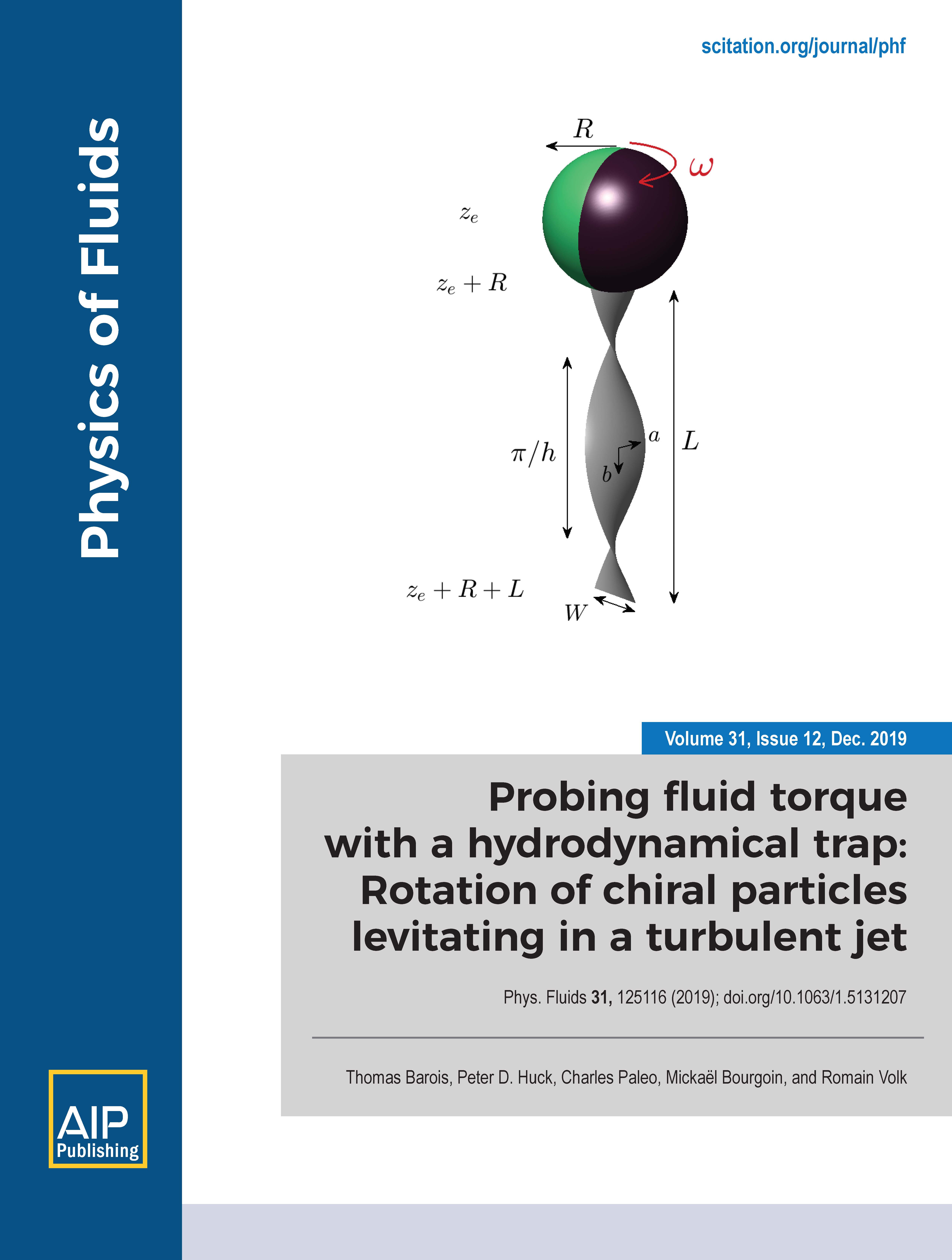
Crater formation by impacting a granular material is ubiquitous in nature, from raindrops falling on sandy deserts to meteorites impacting moons and planets. Although previous works have considered the erosion process and surface morphology, less attention has been given to the jet hydrodynamics. Based on laboratory experiments, we show that when the liquid jet forms a crater, two situations arise. For weak or no erosion and for open craters, the jet is stationary. For vertical or overhanging crater walls, the jet displays a wide range of behaviors, from quasiperiodic oscillations to symmetry breaking and exploration of different states in time. An analysis of the different system states leads to the emergence of a bifurcation diagram depending on a dimensionless parameter, J, comparing the jet impact force to the force necessary to eject a grain. The frequency of the jet oscillations depends on the inertial velocity, the jet dispersion and the ratio between the injector cross section and the confinement length.
Reference :
- Stability of a Liquid Jet Impinging on Confined Saturated Sand, Jérémy Vessaire, Germán Varas, Sylvain Joubaud, Romain Volk, Mickaël Bourgoin, Valérie VidalPhysical Review Letters, American Physical Society, 2020, 124 (22), pp.224502. ⟨10.1103/PhysRevLett.124.224502⟩

